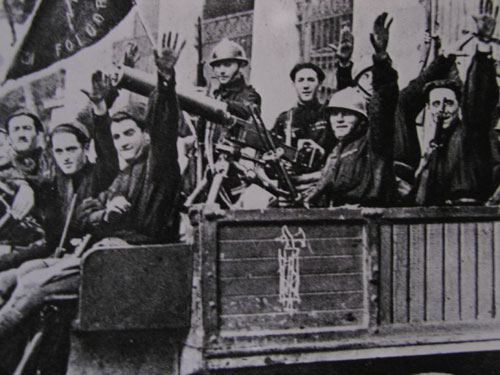Prime Minister Lloyd George called an emergency meeting with his cabinet on November 2nd to discuss the ramifications of Clemenceau’s decision to support Denkin’s assault on Moscow. Not only had the Allied interventionists agreed that their actions in Russia would primarily be defensive in nature but Clemenceau had neither consulted nor warned the General Staff of the BEF of his machinations on the Odessa Front; this forced Lloyd George to reconsider his own level of commitment to the Murmansk theatre. Earlier in the year, the Northern Russian White Army, which the BEF had been supporting outside Entente occupied Archangelsk, we’re in dire straits. It was only by the British government’s decision in April of that year to remain heavily committed, due primarily to the alarming success of the German Revolution, that it had not completely been wiped away by the onslaught of Soviet Red Army offensives. However, escalating British losses within the ongoing campaign to defend the Hannover SPD government, coupled with the still active blockade of German ports had begun to put a significant level of strain on the British economy.
“I fear that if we allow Clemenceau’s actions to influence our own policy as it relates to the Russian expedition, we may draw ourselves further into this growing quagmire,” said one of his ministers. Lloyd George agreed.
“This war will see no end if we allow ourselves to be pulled further into this mess,” he said to his ministers.
After continued discussions, on November 4th both Lloyd George and the cabinet agreed that all BEF forces were to remain on the defensive in their current theaters until the outcome of Denkin’s offensive could be determined. No assistance would be sent to aid the assault on Moscow.
______________
Italy
Victor Emmanuel's punitive reactionary forces crossed into Lombardia via Cremonia on November 5th. Pausing to rest and equip itself with local police detachments and army surplus supplies, on November 7th they began their march on Milan. At the same time, the newly formed Council Communist Party of Italy (PCC) had been publically radicalizing as many Milanese factory workers as possible. In addition Party Chairman Antonio Gramsci had, through his extensive grassroots contacts throughout north Italy, continued to requisition clandestine arms for the coming battle; this resulted in the creation of a medium sized militia force of 20,000 lay factory workers by November 8th. Moreover, additional cadet branches of the main central Council Communist party were franchised out to several districts throughout Lombardia with the intention of spreading the moment the moment the Royal forces were beaten back.
“Prepare fortifications throughout the city! – We must to all we can to protect the homes of those who have dedicated themselves to our cause.” said Acleste De Ambris to a detachment of the militia force on the night of November 9th. With the reactionaries only a day’s march away from the city itself, Gramsci called a final meeting between the leaders of the PCC on the night of November 10th.
“The railways into and out of Milan have been cut; battlements have been constructed throughout the city; and a strong force of men and women dedicated to the cause of liberation stand at the ready. We have all that is necessary to defend the workers from the reactionary forces that have been sent to crush our movement. But more importantly we have the foundational elements in hand to shake the political landscape of
Italia at its core – let us therefore use those elements to not only beat back the armies of the bourgeois regime in Rome, but light the spark of revolution for all the workers of Italy!”
Concluding his speech with a toast to victory with his comrades, Gramsci dismissed to them to their posts.
On the morning of November 12th, the battle for Milan began with an opening barrage of artillery fire from the Italian Royal Army. As shell began to reign down on the city, the PCC militia remained steadfast in their disparate defensive positions.
“Steel your hearts men,” whispered Filippo Corridoni to a small militia detachment under his charge as artillery burst exploded around his position. “Flee now and your families will be left to mercy of these beasts.”
After a full day of bombardment, on November 13th, the Royal Army began to advance upon the city. Fearing stiff initial resistance, an auxiliary division of the far-right
squadrismo marched in front. Upon reaching the outskirts of the central district gunfire erupted from several positions atop buildings adjunct to the city’s main thoroughfare. “Take cover!” shouted
squadristi Gabriele D’ Annunzio as several men under his charge were struck with bullets from the PCC militia.
Witnessing the carnage, the commander of the Italian Royal Army diverted their initial marching direction westward with the intention of entering the city from the south. At the same time the main body of the PCC militia was ordered to march forward to crush the far-right
squadrismo in a rapid counterstroke.
“
Forward!” shouted Giuseppe Di Vittorio as he ordered his PCC militia detachment to fire directly into the beleaguered enemy ranks. At the same time the Italian Royal Army crossed into the south section of the city. Smashing through the weak defensive fortification they encountered along the southern roadway they began to make their way to center of the city. “
We must seize the central government building at any cost!”
______________



